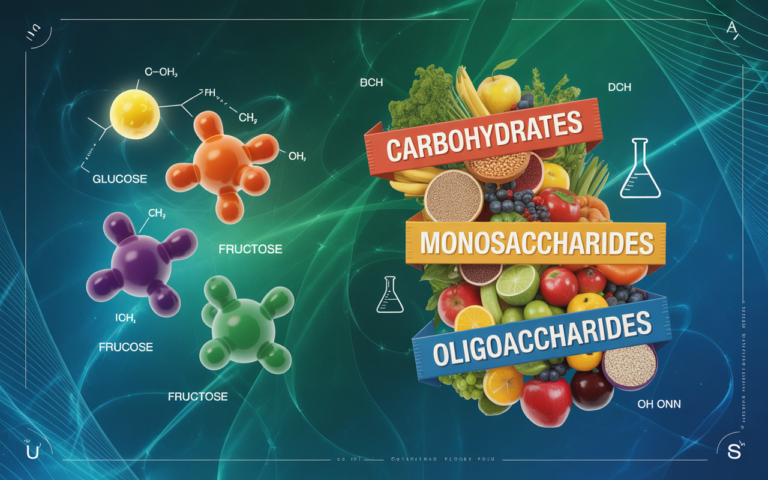Industrial Biochemistry
[ez-toc]
The process of applying techniques and biochemical principles to develop innovative products that benefit humankind is called industrial biochemistry. It deals in biology, technology, engineering, and chemistry fields.

Keys & Areas in Industrial Biochemistry:
Biocatalyst:
Enzymes or microorganisms are used to catalyze a reaction called biocatalysts.
Formentation technologies:
Large-scale production of bioactive compounds using microorganisms.
Biorefineries:
Converting biomass( residues) into valuable products is called biorefineries.
Biodegradation:
Microbial breakdown of pollutants for environment remediation.
Bioseparation:
Separation and purification of biological molecules.
Biofuel:
Microbial production of fuels.
Bioproducts:
Biobased materials, chemicals, and pharmaceuticals.
Significance of Industries:
- Scale: large-scale production
- Cost-effectiveness: reduce cost per unit, making products competitive
- Efficiency: Reduces downstream process and increases overall efficiency
- Yield: High-yield product
- Consistency: Standard and quality control measures
Applications:
- Pharmaceutical companies: APIs (active pharmaceutical ingredients)
- Food processing: in flavor enhancement and beverages
- Detergents: enzymes for degradation
- Fine chemicals: ethanol, methanol, alcohol
- Industrial processes: fermentation, downstream processing
- Research institutes and funding opportunities
- Emerging trends: synthetic biology, CRISPR
Industrial biochemistry in which we study living cells (or components of living cells) and the medical/industrial applications at different levels and things. The scope of industrial biochemistry is vast.
Microbes:
Microbes or microorganisms, are tiny living organisms that exist almost everywhere and are present in nature in two types eukaryotic and prokaryotic but mostly present in prokaryotic form. They are vital for our ecosystem, human health, and various industries. There are some features of microbes that are given below:
- Pervasive lifeforms on the planet
- tolerate extreme Ph, temperature, salts, and concentration, etc
- Dominate Biosphere in terms of metabolic diversity
- Flexible membrane structure
- Efficient nutrient uptake
- Rapid growth and reproduction
- Reproduce by A sexual process (binary fission)
- Have metabolism fast and its cycle continues

Types of microbes:
- Bacteria (e.g. E. coli, staphylococcus)
- Viruses ( e.g. Influenza, HIV)
- Fungi ( e.g. Yeast, Mold)
- Protozoa ( e.g. Amoeba, Giardia)
- Archaea ( ancient bacteria)
Nutrients for microbial culture:
- Macromolecules: The molecules that are required by the body in large quantities such as C, N, O, H, P, and S.
- Macromolecules: Molecules that are required in small quantities e.g. Zn, Mn, Mg, Fe, Ca, Na, K, etc.
- Like any other organism microorganisms also require a source of energy carbon, nitrogen, oxygen, iron, minerals, micronutrients, and water for growth (multiplication).
- These nutrients are supplied in the form of media (culture).
Types of cultural media:
- Synthetic media
- Semi-synthetic media
- natural media
Synthetic media:
The nutritive compound of media is not of natural origin. They are synthesized in the laboratory using certain recipes, mixing, the required salts, minerals, and carbon sources. They are commercially available.
Semi-synthetic media:
Nutrient media are synthesized by using synthetic and natural components. e.g. Brain heart infusion (BHT) Broth.
- Synthetic and semi-synthetic media are used in laboratory cultivation.
Natural media:
It is used on an industrial scale, cost-effective, and present in nature.
Sources of components used in cultivation:
Carbon source:
A carbon source is simple to use and easily available by sugars such as glucose, lactose, complex polysaccharides (starch, glycogen, cellulose), a mixture of various carbohydrates, cereal grain powders, cane molasses, etc. The main purpose provide energy and a carbon skeleton for the synthesis of various biological compounds.
Nitrogen source:
The major types of nitrogen sources used in culture media are ammonium salts, urea, animal tissue extracts, amino acid mixtures, and plant tissue extracts.
Growth factors:
They are required for the growth and multiplication of microorganisms. Growth factors are certain organic compounds that are not synthesized by the cells.
Anti foams:
It is not a nutritive component of media to prevent the formation of foam some antifoaming agents are added e.g. olive oil, sunflower oil, etc.
Energy source:
The carbon sources used in cultured media can work as energy sources.
Water:
Water is the base source of any media, whether it is liquid or solid. Water is required for cooling, heating, and steaming process.
Application of microbes:
- Food production: fermentation ( yogurt, cheese, bread)
- Medicine: Antibiotics, vaccines, probiotics
- Environmental cleanup: bioremediation, oil spills, toxic waste
- Agriculture: soil fertility, pest control
- Biofuels: microbial production of ethanol, butanol
